Child Labour Essay: We live in an age where many of us are privileged enough to enjoy technology-driven amenities or acquire education from a proper school, or satisfy our hunger thrice a day. But, there are still some children out in the world who have not even relished a fraction of such comforts.
Every coin has two phases as with the innocence of childhood. One is enjoying his burgers at McDonald’s while the other is thinking about whether he will get the bread tonight. One is playing with PS at his home while the other is toiling under the sun. One is driving to the school in a brand-new Mercedes while the other is still struggling with counting the marbles.
Children are the blooming flowers in the garden of humanity. Childhood is the depiction of innocence, love and pure bliss. This innocence and childhood must never be stolen from any child.
Child labour is the exploitation of one’s childhood. It is a punishable crime. India stands in the second position for the highest number of child labourers in the world after Africa.
“A child is meant to learn, not to earn.” – Jyoti Basu
Child Labour Essay for Students (Long)
Introduction
Economically active children under the age of 14 years are referred to as child labour. It is the illegal exploitation of the little hands. Such tiny tots are denied their basic human rights such as the right to education, right to speech, right to proper healthcare, etc.
Child Labour, as defined by the International Labour Organization (ILO), is any kind of work or employment that deprives children of their childhood. Anything that exploits the potential and dignity of the child; anything that harms and intervenes in the physical and mental development of the child is referred to as child labour.

In the pursuit of earning a livelihood, many children are compelled to work at such a tender age. It affects their physical, mental, social, and emotional well-being. According to ILO statistics of 2017, out of 218 million child labourers all around the world, 152 million children are engaged in hazardous work which might cost them their lives.
Child labour is a global issue and requires undivided attention from the authorities. World Day against Child Labour is celebrated on June 12th of every year to highlight the issues and challenges towards child labour. The theme for the day was “Protect children from child labour, now more than ever”. Children are the assets of the country and they need to be protected at all costs.
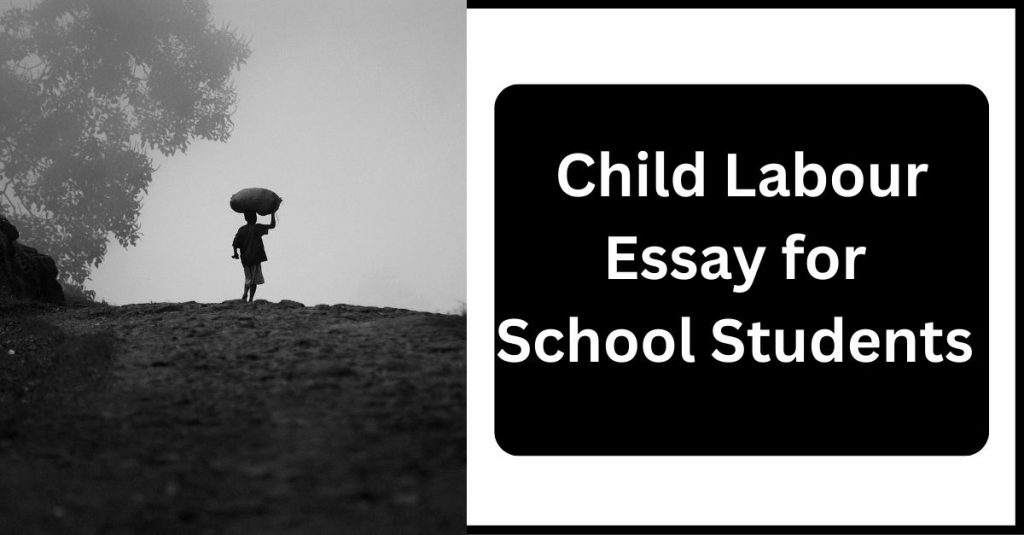
Types of Child Labour
1. Domestic Child Labourers
The children who are indulged in the activities of providing domestic help to wealthy families. Such children (especially girls) look after the daily household chores. They are either paid very less or not paid at all. It is often observed that girls serving as domestic helpers are sexually abused by the men of the family.
2. Industrial Child Labourers
Children who are working in industries, factories, plantations, coal mines, etc. are considered under this category. Such child labourers work under very hazardous conditions which affect their health in the long run. For example, children working in bangle industries tend to lose their eyesight permanently after working for a few years continuously.
3. Debt Bondage
The child labourers who are working to pay off the inherited debt of their fathers. The extent to which such child labourers are exploited is immense. Some cruel money lenders take unfair advantage of the kids and make them work for the whole day with very less or no pay.
4. Child Trafficking
In many remote areas of the country, many young boys and girls are traded for money. The buyers either engage them in forced labour or sexual activities. Sometimes, these children are also forced into pornography and drug trafficking.
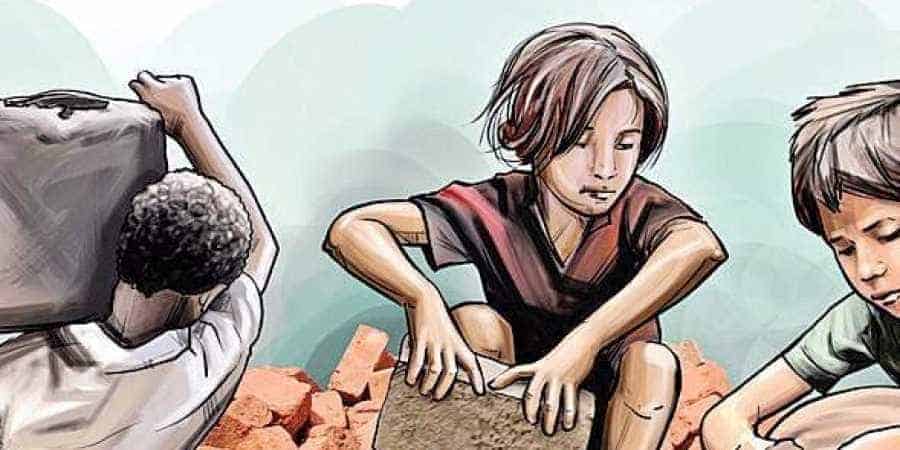
Causes of Child labour
Child Labour occurs due to numerous reasons. When we know the root problem of the cause, we can surely fight it better.
One of the most common and crucial reasons for child labour is poverty. For deprived households, even the addition of little money to the income is very critical. To feed the hunger of the whole family, the parents push their children to earn money and lend them a helping hand. The high rate of unemployment existing within the country also leads to an increase in the number of child labourers. The rural poor households consist of very big families. with the limited resources available, it becomes difficult for them to sustain the whole family’s needs. Hence, many boys work in agricultural fields, coal mines, glass factories, etc. and girls are hired by richer households as domestic helpers.
The illiteracy rate in the poor strata of society is quite prominent. Consequently, they do not understand the importance of education. The children are not encouraged to pursue their studies and instead are expected to support the family financially. The lack of education and enough awareness leads to the exploitation of children’s basic rights.
Slavery: A Harsh Reality
Many industrialists hire child labourers in their factories at lower wages in the pursuit of saving their capital. Even some shopkeepers hire children of tender age to work for them at half of the wages. There is also a sense of satisfaction and security in such employers about the fewer chances of theft or misappropriation of money. Also, people avail loans from money lenders due to poor socio-economic statuses and their incapability to repay the amount, the money lenders hire the children of such loan takers to work at their agricultural lands or farms and pay off the debt.
Many girls are deprived of education because their parents think they will leave their homes after marriage. Therefore, the parents do not consider using their limited resources on such girls and hence force them to work as domestic help in nearby households.
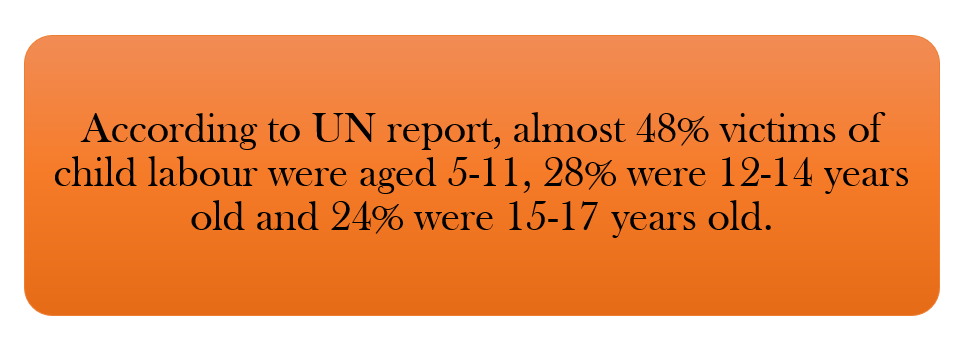
Effects of Child Labour
Child labour is a social evil. It affects the life of the children miserably. The engaged children lose everything in the process. It is very important to enjoy every phase of life, but such children’s childhood is lost between the torture and hardships of the life they are going through. It adversely affects their physical, mental, and emotional well-being.
- It significantly extends the illiteracy and lack of awareness among the generations.
- It leads to malnutrition among the children.
- Such children are found to be addicted to drugs and depression.
- The dignity and morals of the children are compromised.
- They become mature at a very tender age, which is not healthy.
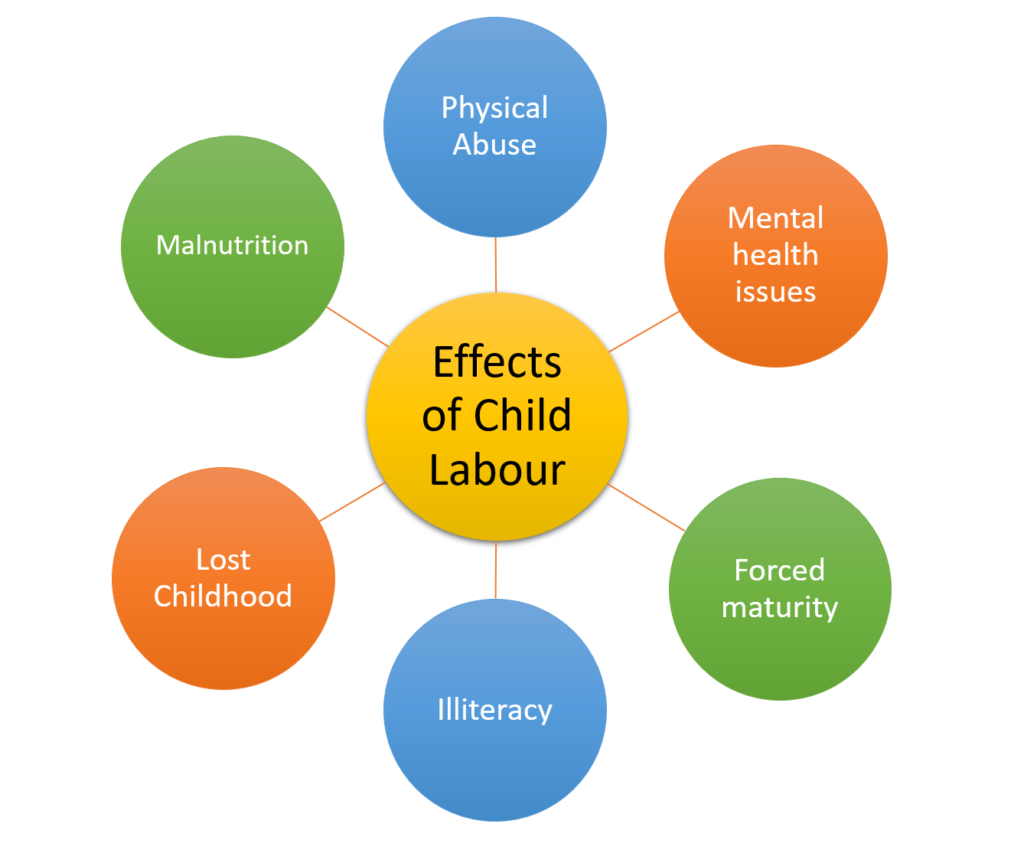
Child labour is a very vicious crime. It not only affects the development of the child but also hinders the economic growth of the nation.
Child Labour Laws
India has taken some very prevalent initiatives towards the iniquitous acts of child labour. Several Child Labour laws have been introduced since 1933 to control child labour. Some of the major laws against child labour are as follows:
The Factories Act of 1948
This Act against child labour prohibits the employment of children under the age of 14 years in any industrial factory. The Act also made some provisions on the working hours and tenure of the employed pre-adults aged between 15-18 years.
The Mines Act of 1952
Since mining is a very hazardous occupation, therefore, any child under the age of 16 years is not allowed in any part of the mine below the ground.
The Child Labour (Prohibition and Regulation) Act, 1986
The Act strictly prohibits the employment of children under 14 years of age. It also regulates laws related to the employment, and working conditions of employed children and formulates a list of prohibited employment. The article has been amended twice in 2006 and 2008.
The Juvenile Justice (Care and Protection) of Children Act, 2000
Under this law, employers who employ children in any hazardous occupation or any form of bondage are subject to a prison term. This Act is a check on the other acts for those who do not follow the laws.
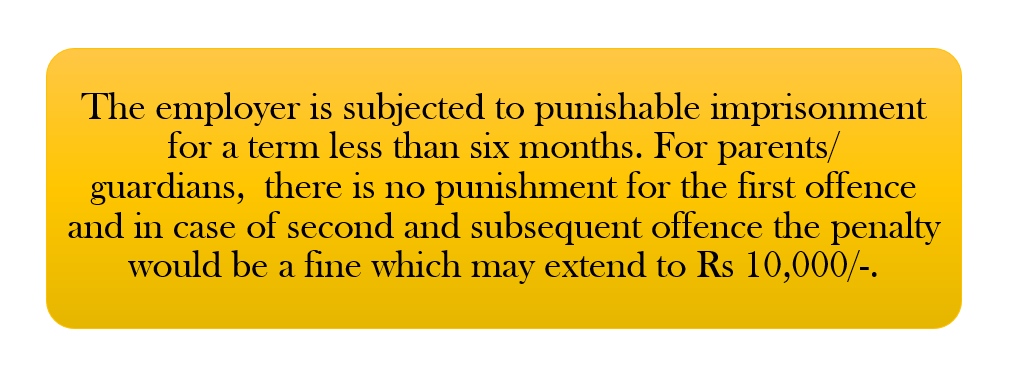
The Right to Free and Compulsory Act, 2009
This law obligates free and compulsory education for children of the age group 6-14 years. 25% of seats will be reserved for underprivileged children in every private school.
Obstacles in the effective implementation of child labour laws
The major issues occurring in the way of proper and effective implementation of the child labour laws are:
- Lack of awareness
- Low illiteracy rates
- Unemployment
- Poverty
- Inefficient administration
- Lack of quality education
Eradication of Child Labour
The Indian government in association with the Ministry of Women and Child Development introduced a scheme called the “National Child Labour Project Scheme”. The NCLP scheme has been initiated to reinstate the child labourers who are trapped in hazardous occupations and facilitate them with education and various vocational program training.
In 2017, an online portal, PENCIL was established for the effective implementation of the NCPL scheme. PENCIL stands for Platform for Effective Enforcement for No Child Labour. It has a complaint corner through which anyone can file a complaint against any violation of child labour acts.
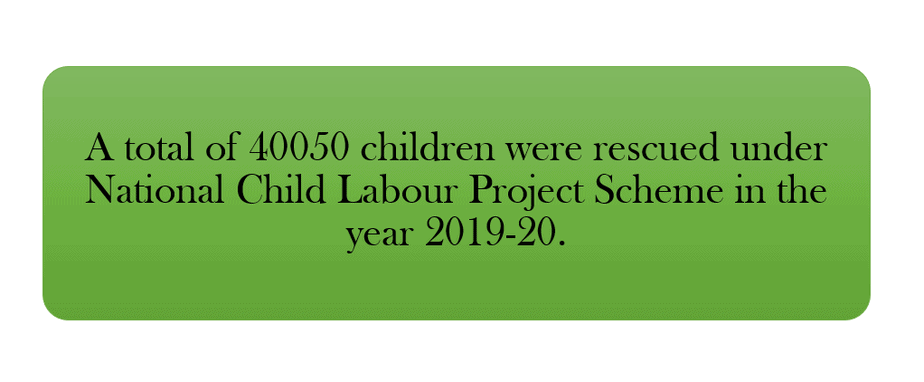
Furthermore, to stop the evil practices of child labour, the following measures must be implemented immediately.
- Child Labour Laws:- India has adopted many laws and policies against child labour. More strict and stringent actions must be taken against those who violate them. Such laws and policies are designed to safeguard the innocence of children and help them in preserving it.
- Employment opportunities:- The root cause of the child labour problem is poverty due to lack of employment. If more employment prospects are open for poor rural households, the rate of child labour will automatically deteriorate.
- Educational facilitates:- The parents do not value education because they do not understand its importance. There must be enough educational facilities available in the neighbourhood so that the children are provided with basic education and acknowledge its importance.
- Spread Awareness:- The parents, as well as the children, must be given awareness about the ill effects of child labour and human rights with adequate statistics.
- Support NGOs:- Many NGOs like CRY, Care India, Bachpan Bachao Andolan, etc. are working in the field to spread awareness about the laws and policies and child labour and help those who are trapped in this vicious cycle.
Conclusion
2014 Nobel Peace Laureate, Kailash Satyarathi quoted “Each time I free a child, I feel it is something closer to God.” Children are the blessing of God to a family, the hope and future of the nation. We must save the innocence that prevails within them. We, as a society, must come forward together to give such children an opportunity to enjoy their childhood as children and stand shoulder-to-shoulder with other kids of their generation.






